Scottish Marine Protected Areas (MPA) monitoring strategy: supporting annexes 1 to 6
These annexes provide additional context to the MPA monitoring strategy, which outlines our approach to MPA-related survey and monitoring.
Annex 2: Examples of the four different monitoring types
Type 0 - Monitoring to determine the continued presence of a feature in a site
Type 0 monitoring is likely to be restricted to the intertidal zone; accessible nearshore areas (by snorkelling, diving or using cameras from boats); or, ‘on the water’ observations. For mobile species this may include data from surveys undertaken at a wider, regional seas scale e.g. sightings data for cetaceans. Data need not be quantitative and can take the form of presence or presence / absence data. The findings of this sampling may trigger more detailed monitoring (Types 1 - 3). Type 0 monitoring is appropriate for completion through citizen science projects and by non-specialists (e.g. see http://marinesightingsnetwork.org/).
Example: Seasearch volunteer diver observation scheme
Seasearch (http://www.seasearch.org.uk/) is a project for volunteer recreational divers who have an interest in marine life. Seasearch run courses to teach divers how to record different habitats and species on their dives. The data collected are used to help monitor and protect the marine environment. Seasearch has been running since the mid-1980’s and volunteers dive regularly all around the Scottish coastline (as well as across the rest of the UK and Ireland). Seasearch is a partnership between the Marine Conservation Society (MCS), The Wildlife Trusts, SNCBs and others, co-ordinated nationally by MCS.
Seasearch data contributed to the identification and designation of MPAs in 2014 and continues to enhance our knowledge-base on the distribution and status of the protected habitats and species within and outside the Scottish MPA network. Summaries of Seasearch activities are available online[4].
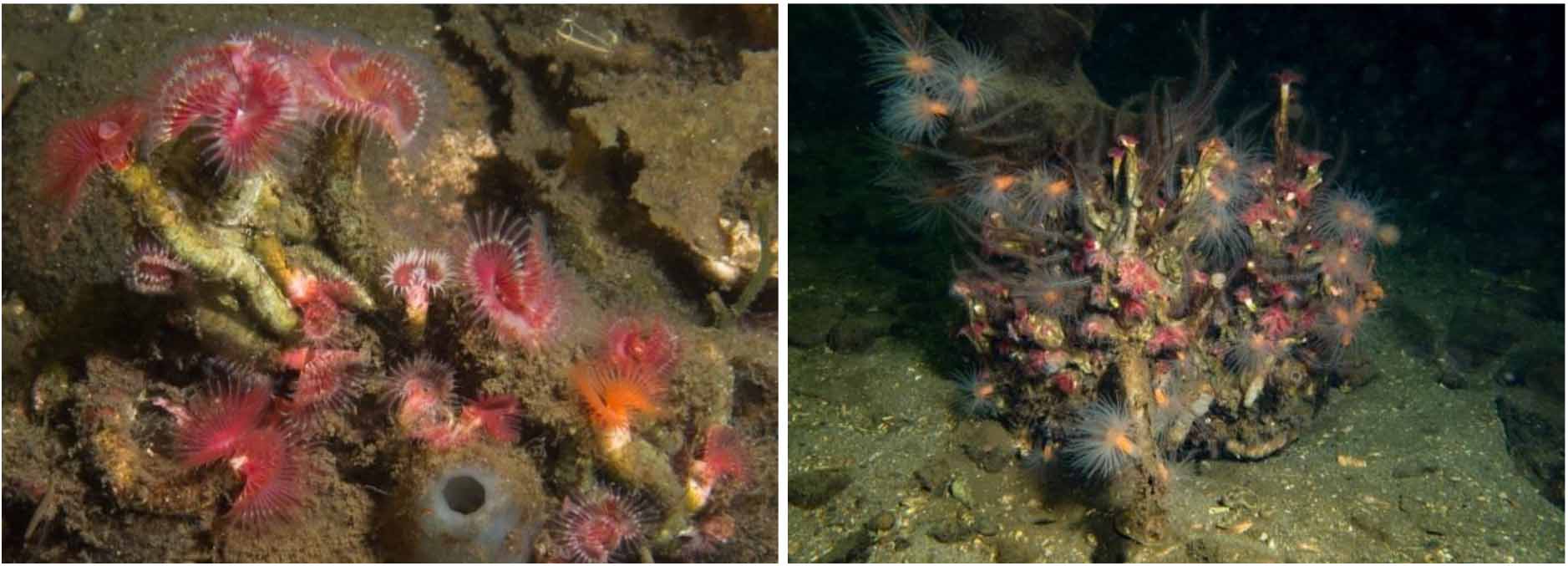
As well as recording the protected features of MPAs, recent Seasearch dives have also confirmed the presence of habitats of nature conservation interest in previously unrecorded areas. Professional marine biologists from the Orkney campus of Heriot-Watt University are regular Seasearch divers and in 2016 confirmed the presence of flame shell beds in the waters around Orkney for the first time. These records extend the Scottish geographic range of this Priority Marine Feature (PMF) which is perhaps best known from west coast sea lochs, where it is a protected feature within five MPAs.
In 2015, volunteer Seasearch divers recorded small, delicate reefs of colourful ‘organ-pipe worms’ Serpula vermicularis during a shore dive in Loch Ailort. Serpulid reefs have only been reported at a handful of locations in the world, making it one of the rarest marine habitats we have in Scotland.
Under the auspices of the Scottish MPA Monitoring Strategy, future Type 1 monitoring studies are proposed to track the status of the delicate reefs within the Loch Creran SAC and the Loch Sunart NC MPA. We will also continue observations of the aggregations recorded by Seasearch divers in Loch Ailort.
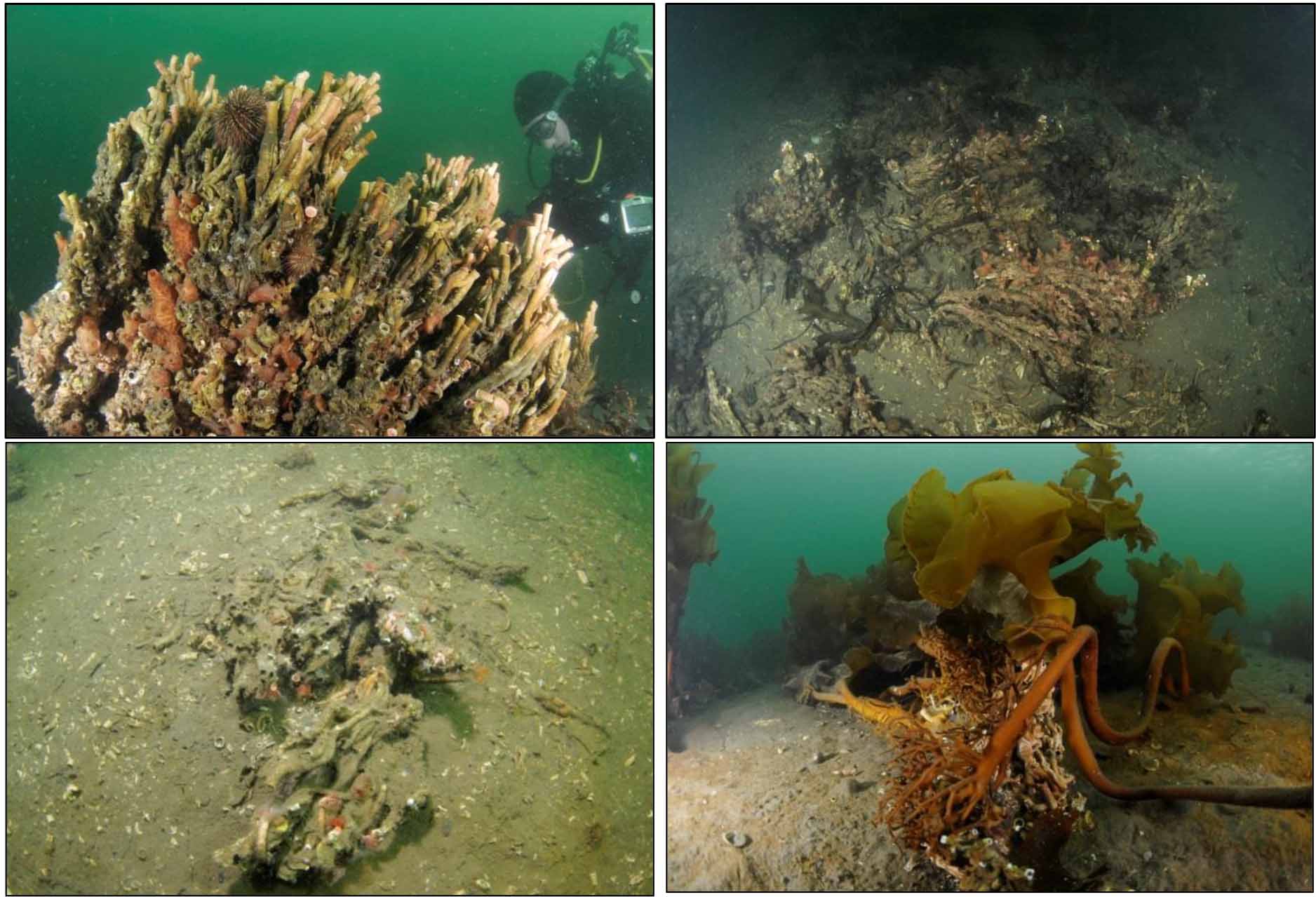
Monitoring examples of habitats in areas outside the MPA network (including the flame shell beds recorded by Seasearch divers in Orkney) will form a key element of wider marine biodiversity monitoring and provide invaluable context for ongoing MPA-related studies.
Type 1 - Monitoring designed to assess the condition of a protected feature across a site.
This type of monitoring is quantitative (for example, density data or data that allows assessment of the status of populations of mobile species e.g. photo-ID) and statistically robust, allowing the rate and direction of change in the feature of interest over time to be quantified. The design of Type 1 monitoring should include consideration of known activities / pressures. The use of reference areas outside of MPAs may be considered to provide context for any changes observed. This monitoring provides data that are appropriate for the assessment of status against MPA feature conservation objectives - recovery (trajectory) and / or maintenance - informing management action and reporting obligations.
SNH has undertaken Type 1 monitoring in many of the MPAs in Scottish territorial waters over the last 15 years, as part of their corporate Common Standards Monitoring (CSM) programme[5]. Details of repeat Type 1 monitoring studies of inshore benthic habitats are available via the SNH publications catalogue[6] (e.g. Moore at al., 2015 & 2016 present the findings of recent work in the Sound of Arisaig & Loch nam Madadh SACs). Initial monitoring studies are now also underway on more recently designated sites (e.g. NC MPAs across Scottish waters and SACs in the offshore area). Details of Type 1 monitoring studies in Scottish offshore MPAs are available from the JNCC MPA monitoring webpage[7]. The UK monitoring options for deep sea and offshore habitats will inform the scope of future offshore MPA monitoring in Scottish waters.
Example: Monitoring grey seals at the Monach Isles SAC [material adapted from SCOS, 2016]
The Sea Mammal Research Unit (SMRU) at the University of St Andrews, conducts biennial aerial surveys of the major grey seal breeding colonies in Scotland (SCOS, 2016). The surveys are conducted during the pupping season when grey seals aggregate in breeding colonies. Digital images of the whole colony are taken and processed to make a composite image (Figure A2.3).

From each composite image the number of whitecoat, moulted and dead pups are recorded (Figures A2.4 and A2.5), and the series of 3 to 5 complete counts is used to estimate pup production for each colony (using a model of the birth process and the development of pups).
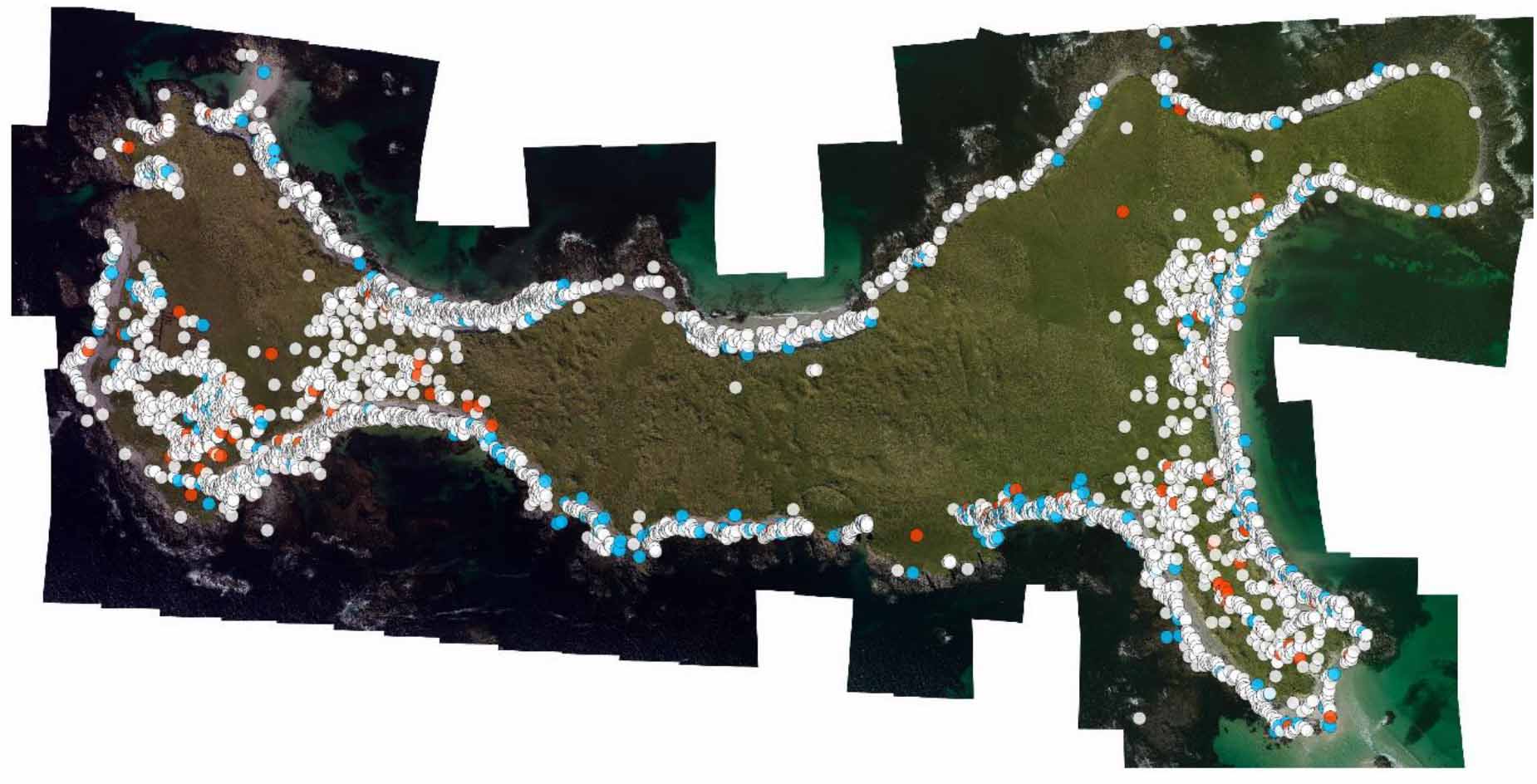
The quantitative data collected from these surveys allow for trends in pup production to be measured and these trends can be compared between colonies, regions (Figure A2.6) and different time periods.
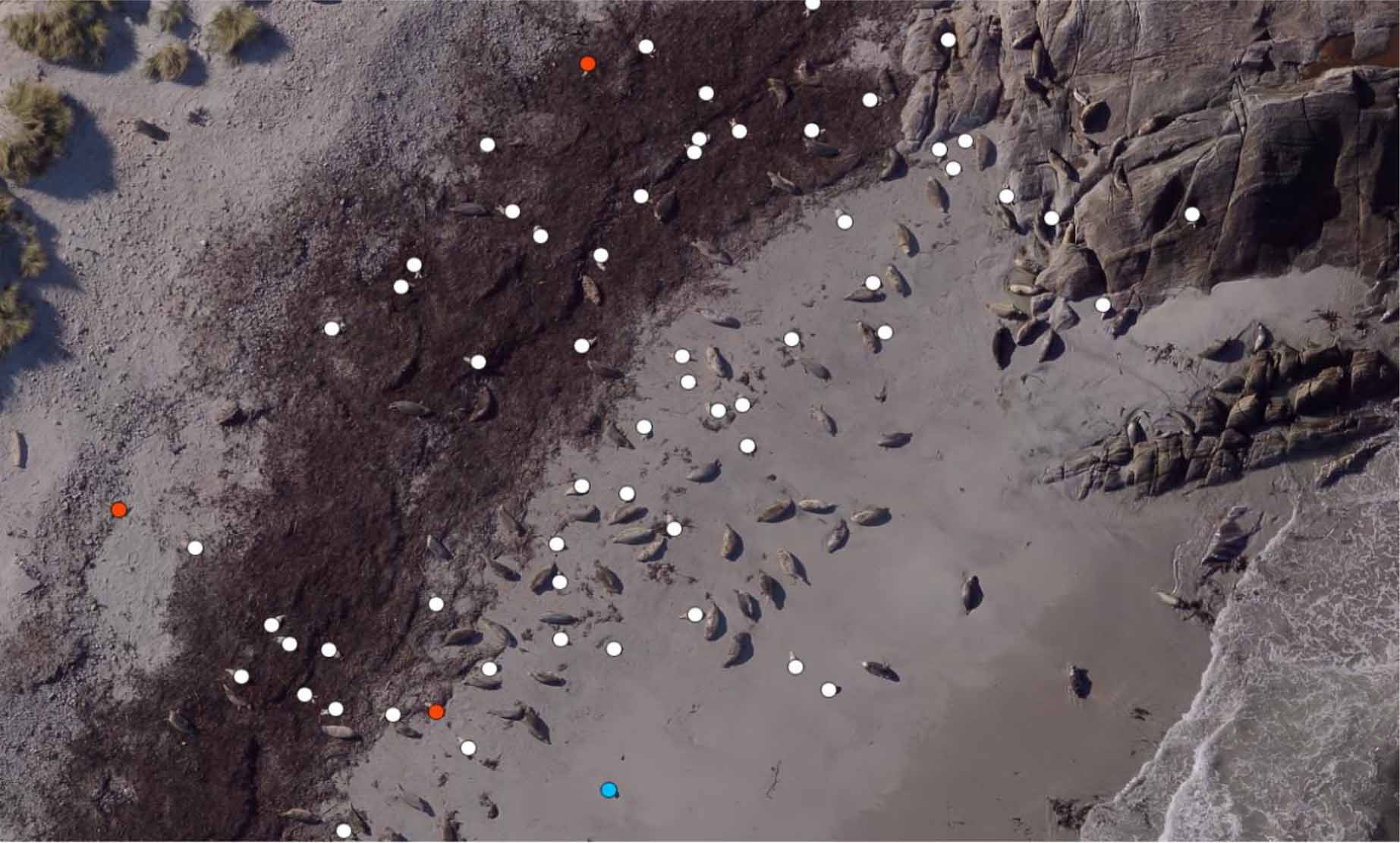
Due to the spatial coverage of all major seal colonies in this survey, the data are used in population dynamic models to estimate the total grey seal population size in Scotland.
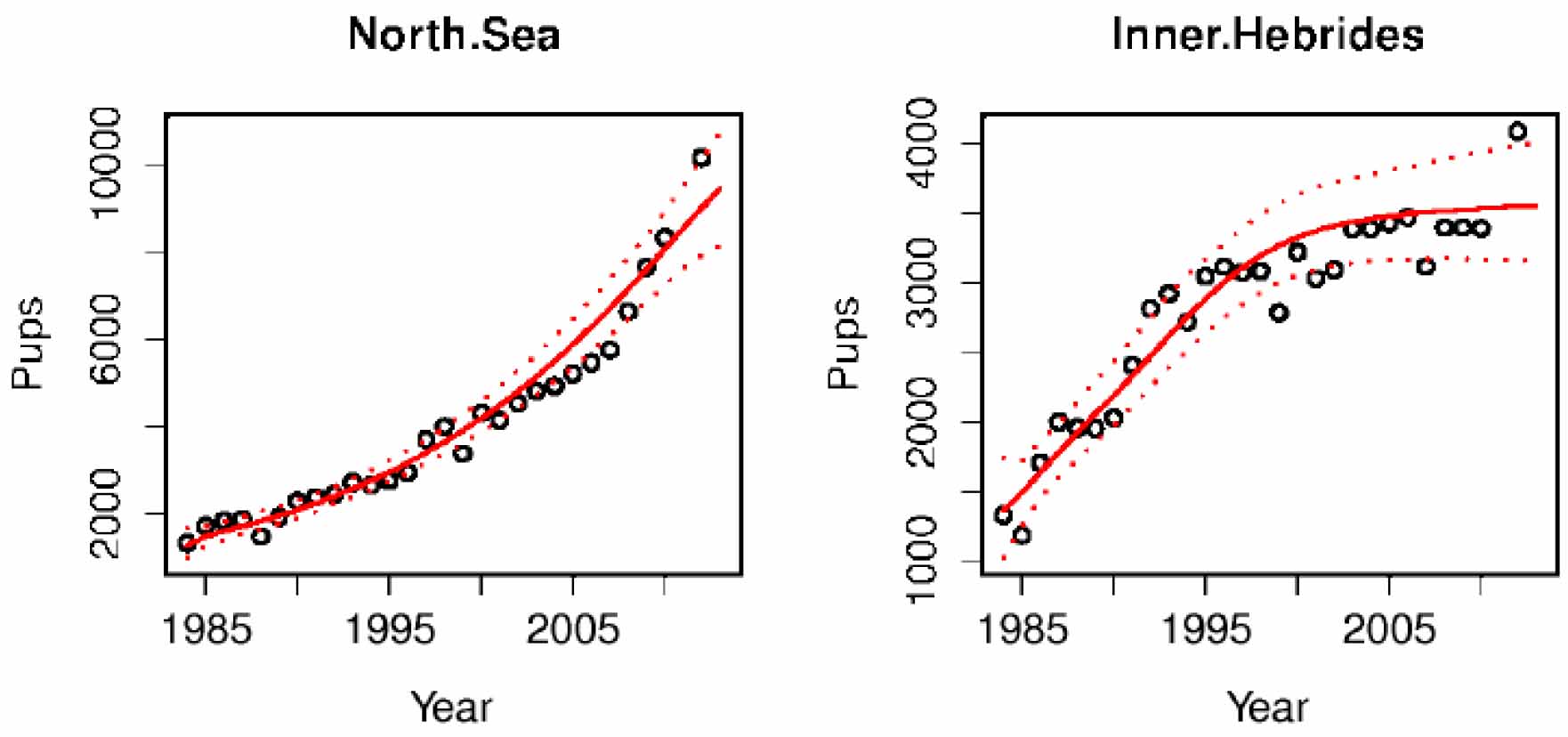
The results of surveys inform reporting on the condition of grey seal SACs (via SNH commissioned research reports[8]) and the status of species across UK waters, fulfilling the surveillance requirements of the Habitats Directive.
Example: Monitoring the condition of seabed habitats in Scottish nearshore MPAs focusing on recent work in the Otter Narrows in Upper Loch Fyne
In 2015 SNH initiated monitoring within the management area put in place to support recovery of the flame shell Limaria hians bed in the Otter Narrows in Upper Loch Fyne (part of the Upper Loch Fyne and Loch Goil MPA).
Quantitative remote video transects and infaunal grab sampling were combined with in situ diver observations to validate the presence of flame shells and to more accurately delineate the extent of the bed (Figure A2.7). Relocatable dive transects were established and diver video footage was collected along each transect together with infaunal cores (in place of grab sampling to minimise damage to the bed). Cell count quadrats were carried out to determine coverage of flame shell nest material. In addition to the diver transects, flame shell nest percent cover was determined at a series of spot dive locations to supplement comparable work undertaken in 2012 (Moore et al., 2013).

The final results of the 2015 biological sampling will be used to interpret a full coverage acoustic multibeam dataset collected within the Otter Narrows management area in April 2016 by the British Geological Survey (see Figure A2.8 overleaf). Acoustic sampling may prove to be a useful monitoring tool in its own right for assessing changes in the extent of the flame shell bed habitat in this location (charting recovery) but ground-truthing techniques are likely to remain an essential part of any repeat surveys due to the cryptic nature of the flame shells themselves.
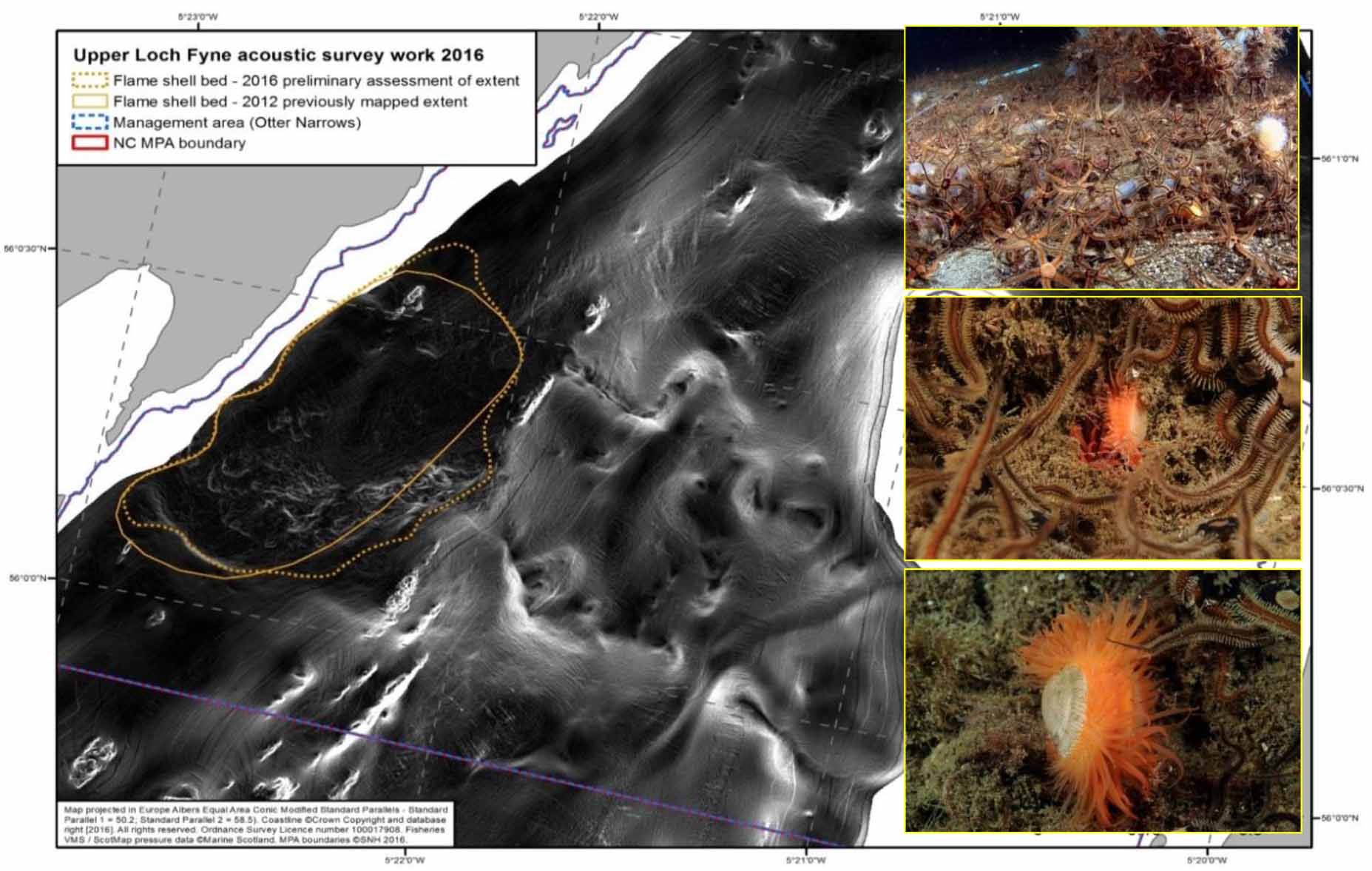
Type 2 - Monitoring or analyses undertaken to explore pressure state relationships
This monitoring is best suited to exploring the likely impacts of anthropogenic pressures on habitats and species. It allows testing of hypotheses about observed patterns, and is generally best applied in areas where a gradient of pressure is present (e.g. no pressure increasing gradually to ‘high’ pressure).
It relies on finding relationships between observed changes in biodiversity and observed variability in pressures and environmental factors. It provides inference but it is not proof of cause and effect. The spatial and temporal scale for this type of monitoring will require careful consideration to ensure inferences are reliable; for example, inference will be poor in situations where the presence of a pressure is consistently correlated to the presence of an environmental driver (e.g., a specific depth stratum).
Example: Monitoring the condition of seabed habitats in the Fladen Grounds across a gradient of fishing pressure
In 2014 JNCC and Cefas (Centre for Environment, Fisheries and Aquaculture Science) conducted a monitoring study at the Fladen Grounds. Targeted sampling was planned along a subsurface abrasion pressure gradient, informed using the spatial distribution of both UK and non UK demersal fishing effort acquired from Vessel Monitoring System (VMS) data (Murray et al., 2016). A gridded (0.05 dd) subsurface abrasion pressure layer from 2013 was created to identify areas across the site that had potentially been exposed to varying levels of physical abrasion pressure as a result of demersal trawling activities. The subsurface abrasion layer was initially split into 7 pressure categories. Two replicate cells (‘a’ and ‘b’) were identified for each category resulting in 6 cells in total. The number of categories and replicates was based on available time for this element of the survey along with experience derived from similar ‘pressure-response’ studies applied at comparable feature types. Ten replicate samples were randomly allocated within each cell, resulting in 100 samples taken in total along the pressure gradient.
Type 3 - Monitoring or analyses undertaken to explore the effectiveness of MPA management measures.
Monitoring that provides evidence of causality within a robust statistical framework, examining changes in the feature of interest against the onset of the putative impact (for example, the establishment of management measures that exclude fishing activity). The “beyond BACI” statistical methodology associated with this monitoring is rigorous, requiring multiple baseline surveys across multiple control and impact sites to be undertaken prior to the onset of the putative impact and thereafter (see Underwood, 1992 & 1994). However, conclusions from this monitoring may be applicable to other MPAs with similar habitats that exhibit similar trends (inferred from Type 1 monitoring).
Example: A beyond BACI study of the Small Isles MPA
MSS has conducted a Type 3 monitoring study at the Small Isles Marine Protected Area (MPA). Monitoring targeted burrowed mud habitats supporting the tall seapen Funiculina quadrangularis) presently known to be subject to demersal fishing pressure. To ensure the accurate targeting of F. quadrangularis, a high resolution map layer of predicted habitat suitably, produced by MSS (Greathead et al., 2014), was overlaid onto VMS data. Monitored sites were classified as impact sites, those that are likely to be closed to fishing by means of a Marine Conservation Order (MCO), and control sites, those lying outside the potential MCO, both inside and outside the boundaries of the MPA. In accordance with the beyond BACI methodology, multiple baseline surveys have been carried out in both control and impact sites prior to the establishment of the MCO. Data were collected in the form of quadrat images, taken from over 40 stations at each site. To avoid sampling at an inappropriate scale, the number of quadrats taken at each station, and hence the total quadrat area at each station, was dictated by densities of F. quadrangularis observed across the wider regional area. These density data were collected during the preliminary survey phase. The total number of stations recorded at each site was based on available survey time and from statistical power calculations computed from similar, MSS quadrat studies in the Firth of Lorn and from preliminary survey data.
References
Cooper, R., Crombie, K., Faithful, S., Lewis, W. & Scanlon, M. 2016. Survey report - South Arran & Upper Loch Goil and Loch Fyne Marine Protected Areas. November 2015 - April 2016. Unpublished report from British Geological Survey to Marine Scotland and Scottish Natural Heritage.
Greathead, C., González-Irusta, J.M., Clarke, J., Boulcott, P., Blackadder, L., Weetman, A. & Wright; P.J. 2015. Environmental requirements for three sea pen species: relevance to distribution and conservation. ICES Journal of Marine Science 2015; 72(2): 576-586. doi: 10.1093/icesjms/fsu129.
Marine Scotland. 2016. Simple guide to fisheries management measures in Marine Protected Areas (MPAs). Available from http://www.gov.scot/Resource/0049/00493862.pdf
McBreen, F., Jesus, A., Camplin, M., Clark, L., Edwards, H., James, B., Pirie, C., Steel, L., Young, M., Johnston, C. & Hawkridge J. 2016. A review of monitoring and assessment of seabed habitats in UK inshore Marine Protected Areas, 1999 - 2013. JNCC Report No. 540. Available from - http://jncc.defra.gov.uk/pdf/Report_540_FINAL_web.pdf
Moore, C.G. 2014. Upper Loch Fyne and Loch Goil pMPA and Wester Ross pMPA - the identification of conservation management areas to support protected feature recovery. Scottish Natural Heritage Commissioned Report No. 764. Available from - http://www.snh.org.uk/pdfs/publications/commissioned_reports/764.pdf
Moore, C.G., Harries, D.B., Cook, R.L., Hirst, N.E., Saunders, G.R., Kent, F.E.A., Trigg, C. & Lyndon, A. R. 2013. The distribution and condition of selected MPA search features within Lochs Alsh, Duich, Creran and Fyne. Scottish Natural Heritage Commissioned Report No. 566. Available from - http://www.snh.org.uk/pdfs/publications/commissioned_reports/566.pdf
Moore, C.G., Harries, D.B., Cook, R.L., Saunders, G.R., Atkinson, R.J.A. & Sanderson, W.G. 2015. 2014 site condition monitoring survey of marine sedimentary habitats in the Sound of Arisaig SAC. Scottish Natural Heritage Commissioned Report No. 807. Available from - http://www.snh.org.uk/pdfs/publications/commissioned_reports/807.pdf
Moore, C.G., Harries, D.B., Lyndon, A.R., Mair, J.M., Tulbure, K.W., Saunders, G.R, Grieve, R. & Brash, J. 2016. 2015 site condition monitoring and site check surveys of marine sedimentary and reef habitats in the Loch nam Madadh SAC, Loch nam Madadh SSSI and Loch an Duin SSSI. Scottish Natural Heritage Commissioned Report No. 923. Available from - http://www.snh.org.uk/pdfs/publications/commissioned_reports/923.pdf
Murray, J., Jenkins, C., Eggleton., J., Whomersley, P., Robson, L., Flavell, B. & Hinchen, H. 2016. The development of monitoring options for UK MPAs: Fladen Grounds R&D case study. JNCC/Cefas Partnership Report, No. 9.
SCOS. 2016. Scientific Advice on Matters Related to the Management of Seal Populations: 2015. Available from http://www.smru.st-andrews.ac.uk/research-policy/scos/
Underwood, A.J. 1992. Beyond BACI: the detection of environmental impacts on populations in the real, but variable, world. Journal of Experimental Marine Biology and Ecology, 161(1992) 145-178.
Underwood, A.J. 1994. On beyond BACI: sampling designs that might reliably detect environmental disturbances. Ecological Applications 4(1): 3-15.
Contact
Email: marine_biodiversity@gov.scot
There is a problem
Thanks for your feedback